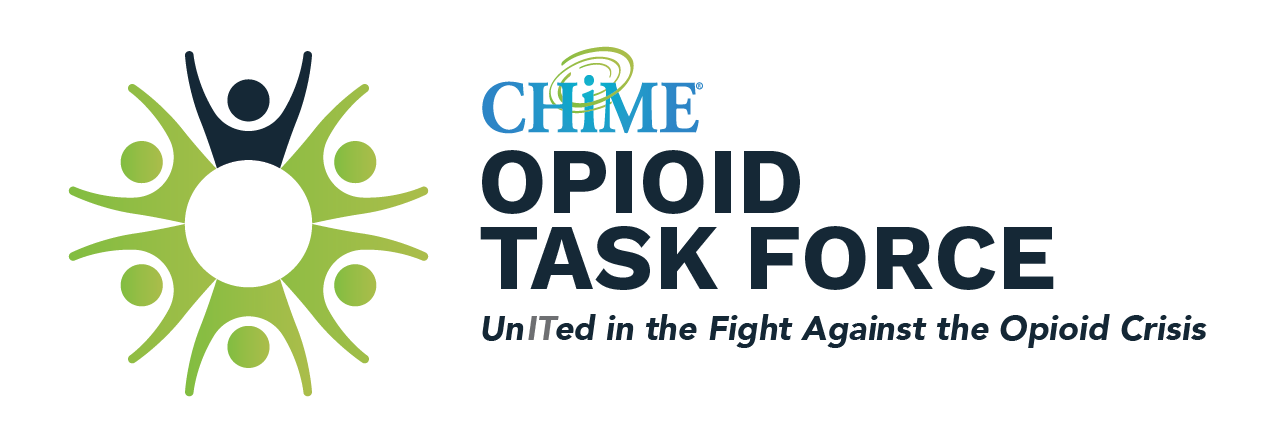At CalvertHealth (Prince Frederick, MD), opioid stewardship planning efforts first began in December 2015. An Opioid Stewardship Task Force was officially established in 2016, with a mission of ensuring safe and appropriate use of opioids. In terms of oversight, the Opioid Stewardship Task Force reports to the CalvertHealth Medication Usage and Safety Team (MUST), and meeting minutes are sent to CalvertHealth’s Medical Executive Committee.
CalvertHealth deliberately took a well-rounded, inclusive approach to membership on the Opioid Stewardship Task Force. The group is co-chaired by Kara Harrer (CalvertHealth director of pharmacy) and Drew Fuller, MD, (a CalvertHealth ED physician), with wide representation from across the CalvertHealth system, including stakeholders from hospital leadership, nursing, quality and public relations. (See below.) Notably, the Opioid Stewardship Task Force includes participants from outside CalvertHealth as well, such as representatives from the County Health Department and physician practices in the community. According to Harrer, “It was important to us that we collaborated with our allied health partners and educated them on what we were doing to tackle the crisis. We wanted to do our best to ensure everyone was on the same page and that opioid stewardship efforts in the community were as aligned as possible.”
| Representatives on CalvertHealth’s Opioid Stewardship Task Force | |
|---|---|
| Addiction medicine | Legal/Compliance |
| Anesthesiology | Nursing |
| Behavior health | Nutrition |
| Department of Medicine | Pain management |
| Emergency department | Patient education/advocacy |
| Hospital administration (CMO/CQO/CIO) | Pediatrics |
| IT/IS | Pharmacy |
The Task Force made data and reporting a high priority, including metrics such as total opioid orders in the emergency department per month, total opioid IV doses per month and total opioid tablets prescribed per month. “Focusing on data and reporting was essential for us to track progress on our initiatives, communicate the impact of our stewardship efforts to the board, and educate our physicians and allied health partners,” says Fuller.
IT worked actively with the Opioid Stewardship Task Force to build the reports and track the defined metrics in the EHR. Ensuring accurate data was critical, especially in terms of engaging and educating clinicians. “Physicians are very accustomed to being measured – they just want to be measured fairly,” says Fuller. “Access to the right data can be really powerful. Just being able to show a physician that they are prescribing two-three times more opioids compared to their peers is enough to change behavior.”
According to Phil Campbell, CIO/ vice president of information services at CalvertHealth, one of IT’s most important functions in supporting the Opioid Stewardship Task Force is to look for opportunities to make things more efficient. “The physicians know the diagnoses and treatments, the pharmacists know the drugs and the IT team knows the EHR application and what it is capable of,” says Campbell. “It is critical that the CIO stay plugged in with the needs and priorities of an Opioid Stewardship Committee. IT can often make things more efficient in ways end users may not even realize.”
Keys to Success:
- Take a well-rounded, inclusive approach to forming an Opioid Stewardship Committee. According to Harrer, “We wanted to ensure we involved all stakeholders in the discussion – including the public.”
- Make an upfront investment in reporting. Fuller advises: “Avoid vagueness. Define clear metrics that can accurately communicate information. Focus on measurable outcomes.”
- Early – and ongoing – communication between the Opioid Stewardship Committee and IT.
- Adopt and endorse best practice prescribing standards. “There is a myth that physicians don’t like guidelines, but we found that our doctors greatly appreciated them,” says Fuller.
